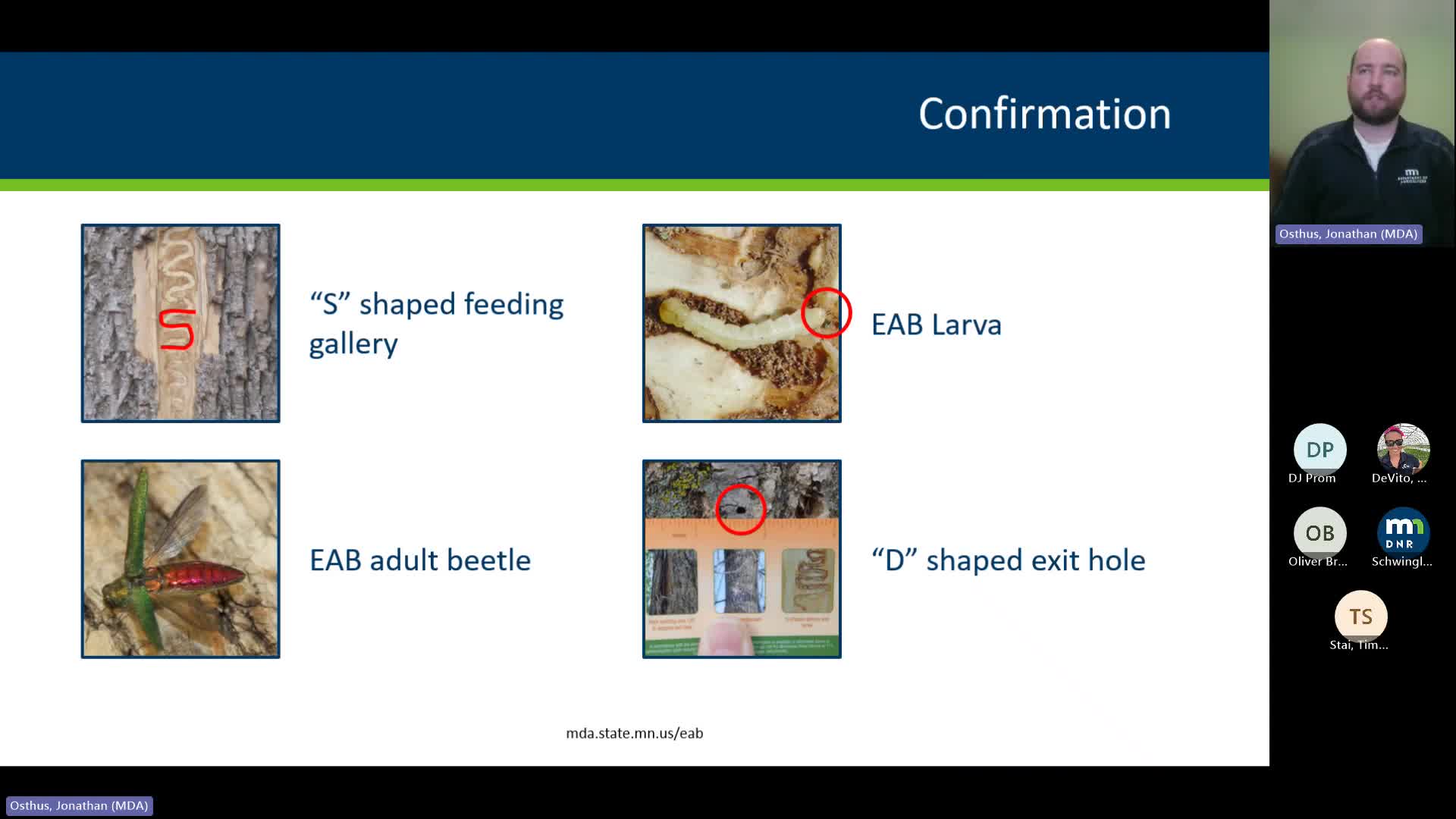Expert Warns Signs of Emerald Ash Borer Infestation Include Woodpecker Damage and D Shaped Holes
December 13, 2023 | Agriculture, Department of , Agencies, Boards, & Commissions, Executive, Minnesota

This article was created by AI summarizing key points discussed. AI makes mistakes, so for full details and context, please refer to the video of the full meeting. Please report any errors so we can fix them. Report an error »

Residents of Morrison County are urged to be vigilant as the emerald ash borer (EAB) continues to pose a significant threat to local ash trees. During a recent informational meeting hosted by the Minnesota Department of Agriculture, experts provided crucial insights into identifying and managing this invasive pest.
The emerald ash borer, a small beetle measuring about half an inch long, is known for its distinctive bright green color and magenta abdomen. It primarily infests ash trees, laying eggs in the upper canopy, where the larvae create S-shaped feeding galleries beneath the bark. As the infestation progresses, trees exhibit several telltale signs, including D-shaped exit holes, woodpecker damage, and canopy thinning.
Key indicators of an EAB infestation include:
- **S-shaped Feeding Galleries**: These are created by larvae as they tunnel through the wood. Residents are encouraged to look for these galleries, especially in the mid to upper parts of the tree.
- **D-shaped Exit Holes**: The adult beetles exit the tree through these small holes, which are about an eighth of an inch wide. If these holes are visible at eye level, it indicates a severe infestation.
- **Woodpecker Damage**: Woodpeckers often target infested trees to feed on the larvae, leaving behind distinctive blond patches and small holes in the bark.
- **Canopy Thinning**: Affected trees may show reduced leaf density and smaller leaves, indicating stress from the infestation.
The meeting emphasized the importance of early detection and reporting. Residents are encouraged to monitor their ash trees closely and report any signs of infestation to local authorities. The Minnesota Department of Agriculture has made resources available, including handouts that help distinguish EAB from other similar insects, such as the six-spotted tiger beetle, which is often mistaken for the pest.
As the emerald ash borer continues to spread, community members are reminded that proactive measures can help mitigate its impact. By staying informed and vigilant, residents can play a crucial role in protecting their local environment and preserving the health of their trees.
The emerald ash borer, a small beetle measuring about half an inch long, is known for its distinctive bright green color and magenta abdomen. It primarily infests ash trees, laying eggs in the upper canopy, where the larvae create S-shaped feeding galleries beneath the bark. As the infestation progresses, trees exhibit several telltale signs, including D-shaped exit holes, woodpecker damage, and canopy thinning.
Key indicators of an EAB infestation include:
- **S-shaped Feeding Galleries**: These are created by larvae as they tunnel through the wood. Residents are encouraged to look for these galleries, especially in the mid to upper parts of the tree.
- **D-shaped Exit Holes**: The adult beetles exit the tree through these small holes, which are about an eighth of an inch wide. If these holes are visible at eye level, it indicates a severe infestation.
- **Woodpecker Damage**: Woodpeckers often target infested trees to feed on the larvae, leaving behind distinctive blond patches and small holes in the bark.
- **Canopy Thinning**: Affected trees may show reduced leaf density and smaller leaves, indicating stress from the infestation.
The meeting emphasized the importance of early detection and reporting. Residents are encouraged to monitor their ash trees closely and report any signs of infestation to local authorities. The Minnesota Department of Agriculture has made resources available, including handouts that help distinguish EAB from other similar insects, such as the six-spotted tiger beetle, which is often mistaken for the pest.
As the emerald ash borer continues to spread, community members are reminded that proactive measures can help mitigate its impact. By staying informed and vigilant, residents can play a crucial role in protecting their local environment and preserving the health of their trees.
View full meeting
This article is based on a recent meeting—watch the full video and explore the complete transcript for deeper insights into the discussion.
View full meeting
